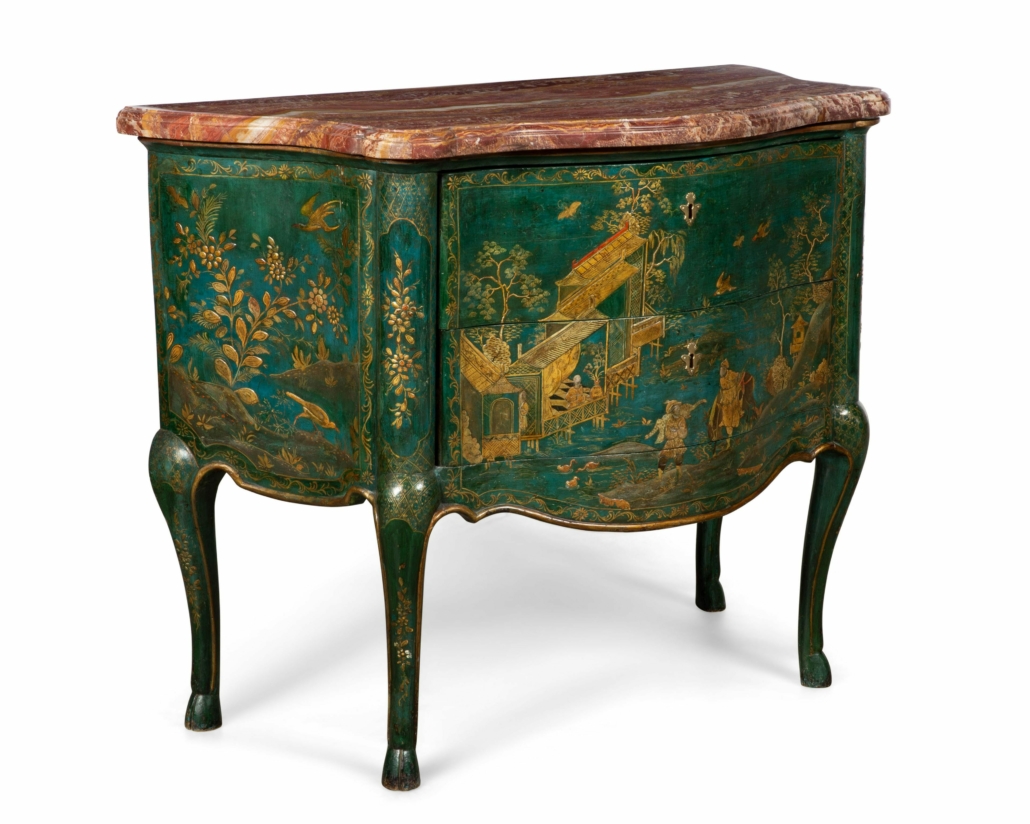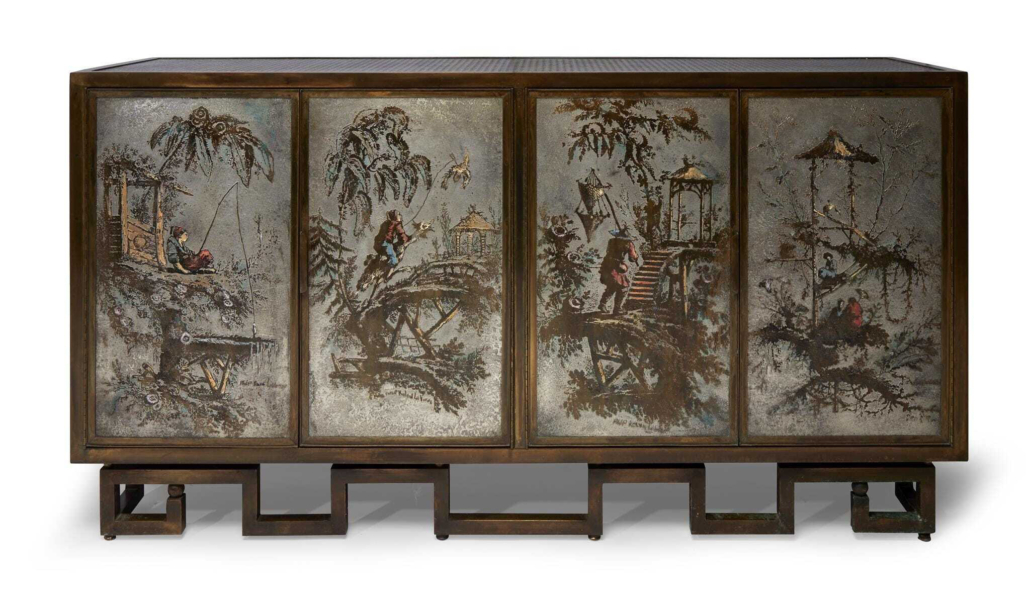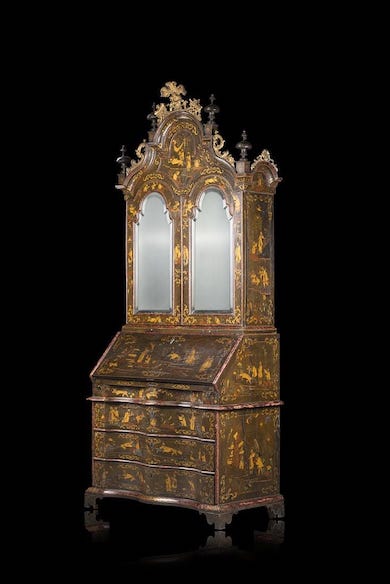
NEW YORK — Traveling to faraway places for pleasure is so commonplace now that it can be hard to imagine a time when it wasn’t the case. In the 17th and 18th centuries, most people could not dream of visiting another country, but, as the West began openly trading with China, Westerners developed a keen fascination with the distant nation. European designers and tastemakers fueled this desire for all things Chinese. They created a style of decoration called chinoiserie, which derives from the French word “chinois,” for Chinese, as it was evocative of Asian art. (“Chinoiserie” is pronounced “shin-WAH-suh-ree.”)
The iconic blue and white china pattern known as Blue Willow is one of the most obvious forms of chinoiserie. It was reproduced widely on fine pieces as well as on the more affordable transferware. While it is based on an earlier Chinese pattern on porcelain, Blue Willow was developed in England in 1780 by Thomas Minton, who then sold the design to a potter, Thomas Turner. Turner mass-produced the pictorial design on china and pottery. It was so popular that many English companies from Spode to Coughley used it on their china services, as did American companies such as Buffalo Pottery.

Chinoiserie decoration appeared on everything from wallpaper to fine china, as well as furniture, clocks, mirrors, and dozens of decorative objects. Instead of featuring abstract or geometric elements, chinoiserie features naturalistic elements such as trees and landscapes, bridges, mountains, people, foo dogs, dragons, animals, and birds.

While it’s possible to argue that chinoiserie is a form of cultural appropriation, the histories of art and the decorative arts contain many revival styles and borrowings from earlier styles. Chinoiserie combined European elegance with traditional Chinese imagery to create something new, and it is believed to have driven interest in authentic Chinese antiques.

Furniture is one of the most prevalent categories for chinoiserie, and fine pieces with exuberant decoration are of key interest to buyers. Chinoiserie furnishings have consistently performed well at auction, as evidenced by an 18th or 19th Century chinoiserie bureau plat in the manner of Francois Linke that sold for $47,500 plus the buyer’s premium in October 2015 at Roland NY, and a North Italian Rococo chinoiserie commode that sold for $22,000 plus the buyer’s premium in February 2020 at Andrew Jones Auctions. The commode had gilt blue and polychrome japanned chinoiserie decoration in the manner of Pietro Massa, probably by Piedmont. Massa was well known for his chinoiserie interiors.

Chinoiserie was also used extensively on objects, such as a small late 17th century silver parcel gilt chinoiserie tankard that sold for $51,057 plus the buyer’s premium in July 2016 at Dreweatts Donnington Priory. The circa-1685 tankard features Chinese-style flowers and flora, landscapes, and birds and animals. The piece stands out from other items of chinoiserie because much of its decoration was done in relief instead of the traditional flat chased decoration that was popular at the time. Mirrors are often sought after, such as a pair of ornate carved gilt wood mirrors having a surround featuring caryatid figures, interlocking leafy “C” scrolls, and pagoda-form pediments. The Georgian mirrors sold at Roland Auction in October 2015 for $40,000 plus the buyer’s premium.
Clocks and music boxes were also given this treatment. Notable examples include a chinoiserie champleve enamel clock set that took $33,000 plus the buyer’s premium in June 2017 at Louvre Antique Auction and a station musical box chalet with chinoiserie automata by Mermod Freres, circa 1900, which fetched $26,689 plus the buyer’s premium in May 2018 at Auction Team Breker.

As some of the larger items can be a bit pricey, new collectors of chinoiserie might want to start off with tray tables, trinket boxes, and smalls that cost a few hundred dollars each. Most are set with gilt floral decoration against a black lacquered ground, but sometimes pieces with red backgrounds also appear in that price range. Bridges, boats, mountains, and floral swags are commonly seen. From stately furniture to the tiniest works of decorative art, chinoiserie offers a classic look that suits both Eastern and Western decors and is just as elegant as when it debuted.
# # #



